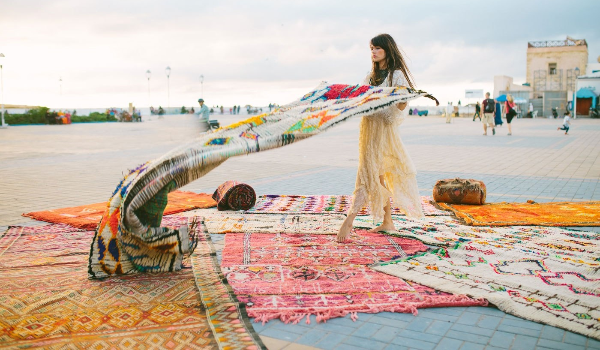
Woven Lives

Image by Trendland
"To the Berber, weaving is life.
The lifespan begins as the weaver prepares the loom for weaving and ends when she cuts the finished textile off the loom.
When I first learned of the Berber view, the notion of associating the finished textile with death filled me with unease. I couldn’t accept it; when I set my scissors to the fabric, I am giving birth to it, sending it off into the world.
There had to be more to this belief, and I discovered there is. To the Berber, death is followed by an afterlife: when the completed textile enters its home, it is reborn to begin life anew.
The Berber identify the wool, the loom, and the act of weaving with matters of fertility and motherhood. The weaving is a metaphor for the evolving relationship between mother and son in a male-dominated society.

Image by Prof. Ravi Poovaiah and Roopa Narayan Sahoo, D'source (E-kalpa Project)
"Preparing the upright (vertical) loom for weaving includes setting up the frame, winding the warp, and warping; that is, attaching the warp threads to the upper and lower beams. This process represents the years when a boy lives among the women, under his mother’s protection and supervision."
Extract from Threads Around the World: From Arabian Weaving to Batik in Zimbabwe by Deb Brandon. This beautiful book weaves together the stories of twenty-five diverse world cultures by showcasing their unique take on textile art. Published by Schiffer Publishing.

